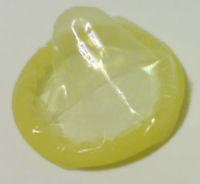Last Update - 20080408
The student will copy the questions below and then answer them in sentence form.
Name and date must be
on
the answer sheet also. Name on top right and date on top left.
Footer- File: Reproductive
Mechanisms in Plants -FirstL-SciTech-208(9)-01
Diagram Source: None
The student must answer the following questions by first writing out the question and then writing the answer directly afterwards. This part can be done on computer using cut & paste.
- 1 History
- 2 Methods
- 3 Misconceptions
- 4 Effectiveness
- 5 Religious and cultural attitudes
- 6 See also
- 7 References
- 8 External links
- Source: http://en.wikipedia.org/wiki/Birth_control
ABSTINENCE
What Is It?
Abstinence is not having sex. A person who decides to practice abstinence has decided not to have sex.
How Does It Work?
If two people don't have sex, then sperm can't fertilize an egg and there's no possibility of a pregnancy. Some forms of birth control depend on barriers that prevent the sperm from reaching the egg (such as condoms or diaphragms). Others interfere with the menstrual cycle (as birth control pills do). With abstinence, no barriers or pills are necessary because the person is not having sex.
You don't have to be a virgin to practice abstinence. Sometimes people who have been having sex decide not to continue having sex. Even if a person has been having sex, he or she can still choose abstinence to prevent pregnancy and sexually transmitted diseases (STDs).

A condom is a device most commonly used during sexual intercourse. It is put on a man's erect penis and physically blocks ejaculated semen from entering the body of a sexual partner. Condoms are used to prevent pregnancy and transmission of sexually transmitted diseases (STDs—such as gonorrhea, syphilis, and HIV). Because condoms are waterproof, elastic, and durable, they are also used in a variety of secondary applications. These range from creating waterproof microphones to protecting rifle barrels from clogging.
Most condoms are made from latex, but some are made from other materials. A female condom is also available. As a method of contraception, male condoms have the advantage of being inexpensive, easy to use, having few side-effects, and of offering protection against sexually transmitted diseases.[1][2] With proper knowledge and application technique—and use at every act of intercourse—users of male condoms experience a 2% per-year pregnancy rate.[3]
Condoms
have been used for over 500 years.[4][5]
In the early twentieth century, with the invention of disposible latex
condoms, they became one of the most popular methods of contraception.
While widely accepted in modern times, condoms have generated some
controversy. Improper disposal of condoms contributes to litter
problems, and the Roman Catholic Church generally opposes condom use.
Source: http://en.wikipedia.org/wiki/Condom
Birth control, sometimes synonymous with contraception, is a regimen of one or more actions, devices, or medications followed in order to deliberately prevent or reduce the likelihood of pregnancy or childbirth. Contraception may refer specifically to mechanisms which are intended to reduce the likelihood of the fertilization of an ovum by a spermatozoon. Birth control is commonly used as part of family planning.
The history of birth control began with the discovery of the connection between coitus and pregnancy. The oldest forms of birth control included coitus interruptus, pessaries, and the ingestion of herbs that were believed to be contraceptive or abortifacient. The earliest record of birth control use is instructions on creating a contraceptive pessary from Ancient Egypt.
Different
methods of birth control have varying characteristics.
Condoms,
for example, are the only method that provides significant protection
from sexually transmitted diseases. Cultural and religious attitudes on birth control vary
significantly.
Source: http://en.wikipedia.org/wiki/Birth_control
The diaphragm is a cervical barrier type of birth control. It is a soft latex or silicone dome with a spring molded into the rim. The spring creates a seal against the walls of the vagina.

1: bladder, 2: pubic bone, 3: urethra,
4: vagina,
5: uterus,
6: fornix, 7: cervix,
8: diaphragm, 9: rectum
Source: http://en.wikipedia.org/wiki/Diaphragm_%28contraception%29
Spermicide is a substance that kills sperm,
inserted vaginally prior to intercourse to prevent pregnancy. As a
contraceptive, spermicide may be used alone. However, the pregnancy
rate
experienced by couples using only spermicide is higher than that of
couples
using other methods. Usually, spermicides are combined with
contraceptive barrier
methods such as diaphragms, condoms,
cervical
caps, and sponges. Combined methods are
believed to
result in lower pregnancy rates than either method alone.[1]
Source: http://en.wikipedia.org/wiki/Spermicide
Sponges
 |
| The sponge is placed in
the vagina in front of the cervix. (Art by Kathryn Maney) |
- absorbs and traps sperm
- uses spermicide to kill sperm
- sits in front of the cervix making it more difficult for sperm to enter